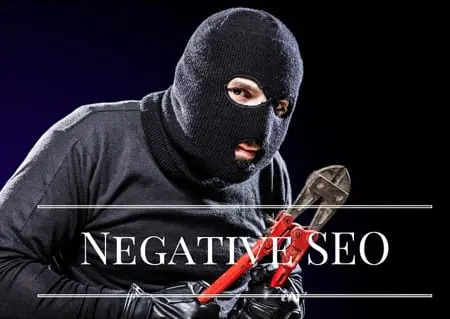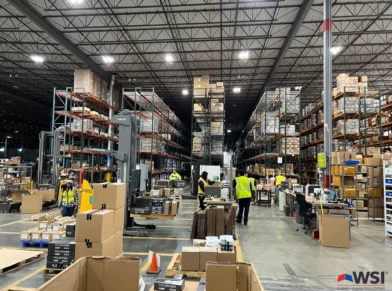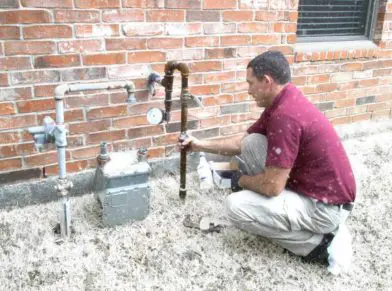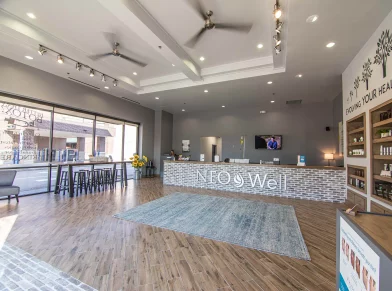8 FORMS OF NEGATIVE SEO AND HOW TO COMBAT IT

Recently, I talked with someone who is, undoubtedly, what you could call a Black Hat SEO. We were talking about various SEO techniques, and how the techniques used have changed over the years. One comment that they made, though, was pretty interesting to me. The comment was “the new SEO is not working on your own site and making it better. It’s actually making your competitors rank worse then they are.” So, essentially, this person’s view of SEO now is not about marketing your own website and getting more links, for example. It’s doing things (legally and illegally) to hurt your competitors. In other words, it’s negative SEO.
Unfortunately, for those of us who are actively marketing our businesses, creating great content and sharing it socially, and optimizing our websites, we have to deal with negative search engine optimization. It’s here, and here to stay. There is a good chance that you’ve had to deal with it already or don’t even realize that someone is doing it to your website right now. I thought that I would outline a lot of the ways that someone can do negative SEO to your website, and how to combat each of them.
Comment Spam, Forum Spam Links
They create all sorts of links to your website, usually linking to your site with various “adult keywords”, pills, or drug names, nothing related to your website. There are literally thousands upon thousands of comments made, all using scripts or other tools to blast the comments and links to your website. The comments and links are left anywhere they can, mostly by filling out comments on abandoned blogs and abandoned forum message boards. Even those links are sometimes “nofollow” links, they still are annoying and negative.
How to Deal with Comment Spam, Forum Spam Links
There really are only a few ways to deal with these. Download the links to your site from Google Webmaster Tools on a regular basis, review the links, and disavow the domains where these links appear. Use a tool like Majestic.com or Ahrefs.com to review the anchor text of all your links. In most cases it’s easy to identify the bad anchor text, and disavow the links. You can also attempt to get those links removed, as well. I prefer to use a tool such as Rmoov.com to send out the emails to the site owners, attempting to get the links removed.
Profile Spam Links
They use profiles in order to create links to your website. The person doing negative SEO on your site will create all sorts of profiles on forums, message boards, and on social media sites and create a link back to your website. Typically these will include names of people you’ve never heard of, and don’t work for your company. The anchor text of links may include someone’s name, but it can also include adult keywords, pills or drug names or other miscellaneous words not related to your business.
How to Deal with Profile Spam Links
Typically dealing with these links requires the same technique(s) as dealing with comment spam and forum spam links, which is to identify, disavow, and remove the links. In this case, I would tend to favor the removal technique, as the site owners will, in fact, actually take the time to remove the profiles completely in many cases if you ask them.
Hacked Sites
Someone creating negative SEO links will hack into a website and make hidden text links to your website, again with “adult keyword” or pills names or drug names. They will get access to WordPress sites through various vulnerabilities, and then they’ll add the links they want. It can also include old WordPress plugins, as well. I cleaned up a client’s link profile once who had all sorts of links from hacked sites pointing to their site. I typically just contacted the site owners and told them their site was hacked. In many cases, they didn’t know their site was hacked. The hacker took time to cover their tracks, so to speak; when the site owner viewed their site they didn’t see the links because they were logged into WordPress. But when they were not logged in, the links were there. I even had to argue with site owners, telling them their site was hacked and showing them, just to get links to my client’s site removed.
How to Deal with Links from Hacked Sites
There’s not much you can do to stop someone else’s website from getting hacked. You can, though, identify the links and see that it’s happening to your site. I would immediately start notifying those sites, using a tool such as rmoov.com to send out the notices via email to those sites. It may help to file a disavow in this case, but ideally you want to get those links removed. To make sure your WordPress site isn’t hacked, I recommend using the WordFence plugin on the website.
Denial of Service Attacks or Slow Website
A denial of service attack may, in fact, be a denial of service (the attacker sends so much traffic to your website that it goes down). But, in many cases the negative SEO attacker will not want to take your site down. They will want to slow it down so much that it’s still in the search engine listings, but Google wouldn’t want to show it that much since it’s a slow site. One technique would be for the negative SEO attacker to buy ads from shady ad networks or ad networks that allow JavaScript in their ad code. Each time one of their ads is displayed, it makes a bunch of calls to your website, slowing it down. This is a distributed denial of service attack, but not in the traditional sense.
How to Deal with Denial of Service Attacks or Slow Website
First, you need to identify that this is happening to your website. I would keep up with what Google is saying in Google Analytics… look at the overall page speed. You can set up your website so that it uses a CDN (Content Delivery Network) such as CloudFlare.com, which does a good job to identify “bad traffic” so it doesn’t get to your website in the first place. The “slow website” negative SEO attack is difficult to identify, if the one doing it to your website is technically savvy so to speak. You’ll need a really advanced SEO to identify this, and it usually involves analyzing your website’s log files. If you suspect this is happening, you’ll want to make sure your site’s log files are turned on and recording every visit to your website. Then, you’ll need to hire an advanced SEO to look at the data.
Duplicate Content Negative SEO
One way that negative SEO can be done that I’ve seen involves duplicate content. Essentially, the one doing negative SEO to your site will create copies of your content and copies of your site. Then, those copies will start to appear on all sorts of other websites. Not only will they create new websites or buy expired domain names and put up the content, they’ll use other sites. I’ve seen negative SEO involve duplicate content put up on “free” or anonymous FTP sites, where they will copy your content and start FTPing it to anywhere they can. Sometimes those free FTP sites are on educational (.edu) or government (.gov) sites that will have a higher Domain Authority than your site, and can end up causing issues.
How to Deal with Duplicate Content Negative SEO
In this case, the most difficult part is identifying that it’s happening. Certainly you can search for phrases that appear on your site and see if it shows up on other sites. Sometimes you’ll just come across it randomly in the search results. There are services out there that will “watch” for duplicate copies of your site. Sites like Copyscape.com can help identify the duplicate content. To get the duplicate content taken down, you’ll need to file DMCA requests, which can be time consuming. There are sites and services that will do this in an automated fashion, but I haven’t used any of them and cannot specifically recommend any of them.
Reviews and Fake Reviews Negative SEO
Negative reviews posted about your site or your business can be annoying, but can also hurt your business. It is against the law in some jurisdictions to pay for positive reviews of your business, but I’ve seen the opposite. I’ve seen businesses pay for negative reviews of their competitors and even just post fake negative reviews.
How to Deal with Fake or Negative Reviews
Depending on where the reviews are left, you’ll need to address them. If they’re posted on Yelp or on Google, you’ll need to flag those reviews and explain why you think they should be flagged. Hopefully if it’s a pattern of negative reviews or a pattern of fake reviews they will be able to see that and remove them. So, definitely flag or report any reviews that you feel are not right. A quick response to each review, though, shows that you as a business are on top of it, and will address any complaints.
Local Negative SEO
I have seen a cases where one competitor started posting more local listings for their competitor–but the data was wrong. For example, one case had their competitor’s listings but the listing had their phone number. They started getting their competitor’s calls, which obviously benefitted them. A wrong phone number, suite number, or other garbled data on local listings can be difficult or time consuming to correct. It can, in most cases, confuse the search engines and lead to a loss of search engine rankings.
How to Deal with Local Negative SEO
The difficult part of this is to identify that it’s happening, which may in fact not be that difficult. There are services that will help you clean up your local listings and fix inaccuracies, or you can do it yourself, which is time consuming. You’ll want to identify all of the mistakes, and you can do that by simply searching for the (wrong) phone number or address and try to correct it on each site where it’s listed. Many websites simply pull in the data from another source, so you’ll need to get it corrected at the source.
Low Quality Directory Negative SEO
Several years ago the trend in SEO was to get as many links to your site as possible. Directories allowed you to get lots of links very quickly for a small fee (or for free). But, in the past few years those directories (typically copies of the DMOZ.org directory) quickly became “low quality” and not somewhere you want to be listed. Someone doing negative SEO on your website will get lots of low quality directory links to your site, usually with anchor text links not related to your website.
How to Deal with Low Quality Directory Negative SEO
Like the comment spam and forum spam links, you’ll want to identify all of these links and disavow them. I also prefer to use a service such as rmoov.com to get them removed, as well. In many cases it’s the same person who owns a lot of the same sites, and they will usually ask you to pay to get the links removed. You can pay to get them removed, but that’s totally up to you. I usually don’t pay a ransom like this.
Certainly this is not an exhaustive list of all of the ways someone can do negative SEO to your website. Those doing negative SEO are, in fact, always coming up with ways to hurt their competitors’ rankings, and it’s always evolving. As the search engines introduce more “factors” that help or hurt search engine rankings, those doing negative SEO will adapt as necessary.
Do you know of any other negative SEO techniques that I didn’t mention? Let me know in the comments so others can be aware of it.



















